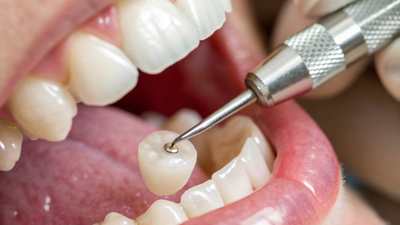Top Stories
Understanding Tooth Implants: Key Facts and Insights

Tooth implants have become a cornerstone in modern dentistry, providing a solution for those who have lost teeth. Unlike natural teeth, which are attached to the jawbone by fine fibres known as the periodontal ligament, implants create a direct bond with the bone through a process called osseointegration. This connection allows implants to withstand chewing forces comparable to those of natural teeth, making them a preferred option for tooth replacement.
The Role of Implants in Oral Health
When a tooth is lost, it is not just a cosmetic issue. The absence of a tooth root triggers changes beneath the surface, leading to bone shrinkage in the affected area. Over time, this can cause sagging skin and muscles, contributing to an aged appearance. Dental implants address this concern by acting as an artificial root, helping to prevent bone loss and maintain natural facial contours. Once integrated with the bone, the implant serves as a foundation for a custom crown, restoring not only the ability to chew but also enhancing speech and aesthetics. Patients frequently report that implants feel like natural teeth, rather than mere replacements.
Another vital aspect of tooth implants is the material used in their construction. Generally, implants are made from titanium, recognized for its biocompatibility—meaning the body readily accepts it. Typically, commercially pure Grade 4 titanium is utilized, providing a balance of strength and integration ease. In more challenging cases, alloys such as Grade 5 titanium, which includes aluminium and vanadium, are preferred due to their superior mechanical strength. Advanced options even incorporate newer titanium alloys like Roxolid, designed to blend strength with flexibility. These materials ensure that implants remain stable under years of chewing stress, with a potential lifespan extending for decades if maintained properly.
The Implant Process and Considerations
Many patients wonder if the implantation procedure can be completed in one visit. While the timeline can vary significantly based on individual circumstances, implant treatment is typically a staged process. In instances where bone health is optimal, an implant may be placed immediately following tooth extraction, allowing for a temporary crown on the same day—often referred to as immediate loading. However, even in these cases, the journey involves multiple stages: assessment, surgical placement, healing, and the eventual fitting of a permanent crown.
For patients with existing bone loss, modern dentistry offers solutions that were previously unavailable. Techniques such as bone grafting and sinus lifts can rebuild and strengthen the foundation necessary for successful implant placement. Additionally, innovative options like short or angled implants can adapt to the available bone structure, while zygomatic implants, anchored in the cheekbone, provide a viable solution for individuals with extensive bone loss. Consequently, with proper planning and expertise, very few patients are deemed unsuitable for implants.
The success of a dental implant is not solely dependent on the procedure itself; patient involvement is crucial. Lifestyle factors significantly influence healing outcomes. For example, smoking can impair blood supply to tissues and hinder bone integration, increasing the risk of implant failure. Neglecting oral hygiene can lead to inflammation around the implant, a condition known as peri-implantitis. Conversely, patients who maintain rigorous oral care, including daily brushing and regular dental check-ups, tend to enjoy survival rates exceeding 90-95% over several decades.
In essence, a dental implant transcends being merely a prosthetic tooth. It represents a scientifically engineered replacement root that integrates with the bone, preserves facial structure, and restores confidence. The journey toward successful implantation highlights that in dentistry, as in healthcare, achieving success relies on a partnership between the clinician’s expertise and the patient’s commitment to their oral health.
-

 World5 months ago
World5 months agoSBI Announces QIP Floor Price at ₹811.05 Per Share
-

 Lifestyle5 months ago
Lifestyle5 months agoCept Unveils ₹3.1 Crore Urban Mobility Plan for Sustainable Growth
-

 Science4 months ago
Science4 months agoNew Blood Group Discovered in South Indian Woman at Rotary Centre
-

 World5 months ago
World5 months agoTorrential Rains Cause Flash Flooding in New York and New Jersey
-

 Top Stories5 months ago
Top Stories5 months agoKonkani Cultural Organisation to Host Pearl Jubilee in Abu Dhabi
-

 Sports4 months ago
Sports4 months agoBroad Advocates for Bowling Change Ahead of Final Test Against India
-

 Science5 months ago
Science5 months agoNothing Headphone 1 Review: A Bold Contender in Audio Design
-

 Top Stories5 months ago
Top Stories5 months agoAir India Crash Investigation Highlights Boeing Fuel Switch Concerns
-

 Business5 months ago
Business5 months agoIndian Stock Market Rebounds: Sensex and Nifty Rise After Four-Day Decline
-

 Sports4 months ago
Sports4 months agoCristian Totti Retires at 19: Pressure of Fame Takes Toll
-

 Politics5 months ago
Politics5 months agoAbandoned Doberman Finds New Home After Journey to Prague
-

 Top Stories5 months ago
Top Stories5 months agoPatna Bank Manager Abhishek Varun Found Dead in Well









